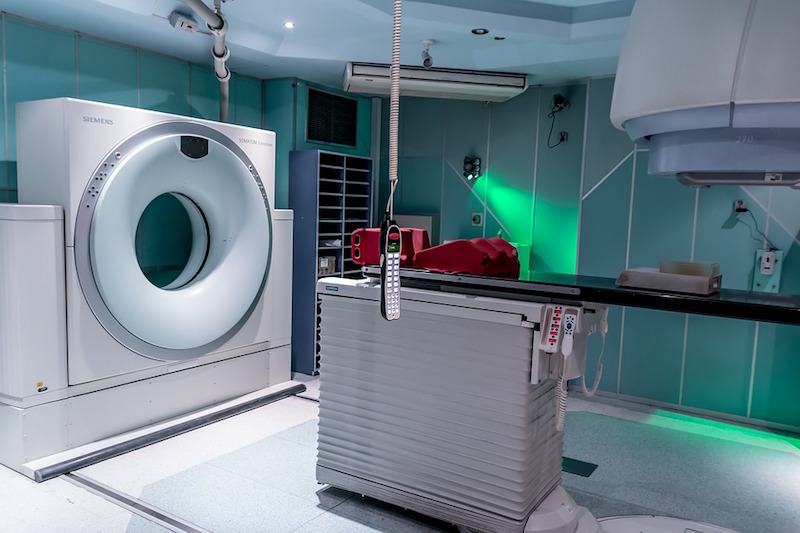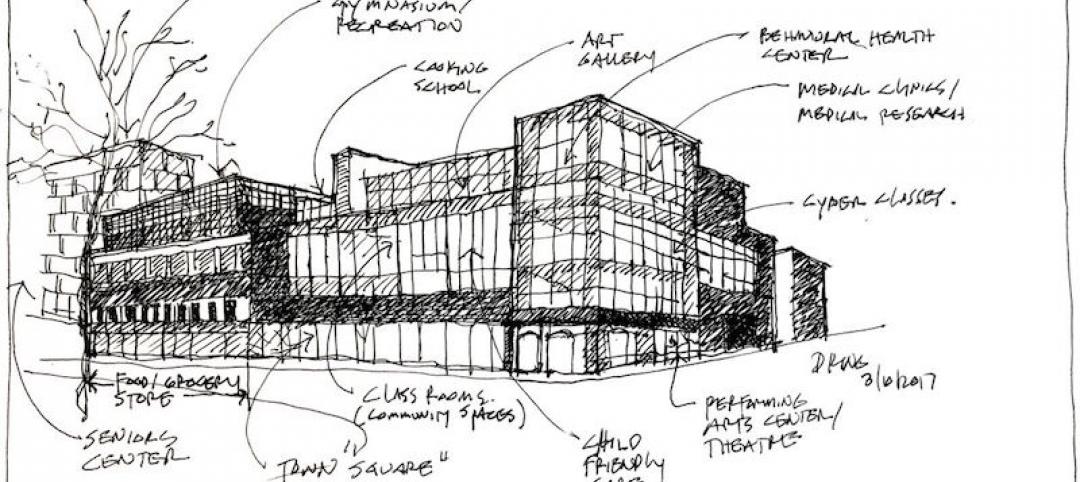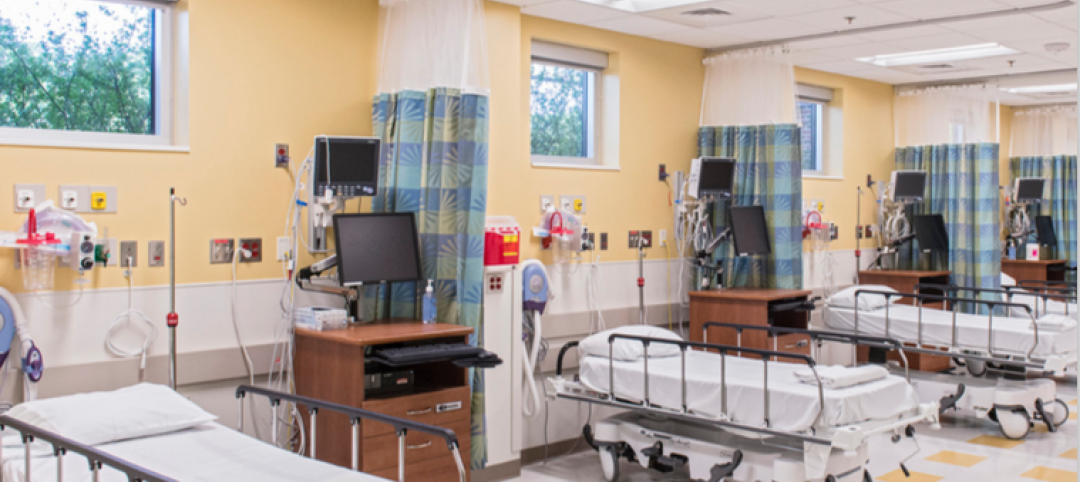E4H Environments for Health Architecture, an architecture firm focused exclusively on healthcare, recently released seven predictions for healthcare facility design trends in 2018.
“From Emergency Departments to micro-hospitals, to the amenities in and locations of hospitals, the year ahead will see continued changes in how healthcare providers are designing and equipping their facilities to meet both patient and market needs,” said Jason Carney, AIA, E4H Partner, in a release. “Add in the pressures of rapidly evolving regulations and payment models, and healthcare design has never been more dynamic than it is now.”
Following are seven top design trends in healthcare for 2018, as envisioned by E4H partners from across the country:
Behavioral Health Drives Emergency Department Reconfigurations
Reflecting both the national opioid-abuse crisis and rising awareness of mental health conditions, hospitals are recognizing an intense need to accommodate cognitively impaired patients more effectively and more sensitively. Hospital leaders are seeking a careful balance in separating patients who pose a risk to themselves and others from the general Emergency Department (ED) population, while ensuring all patients are treated with compassion and dignity. At facilities such as Connecticut’s Waterbury Hospital and Newport Hospital in Rhode Island, areas within the ED are being designed for people and families who are experiencing or approaching a crisis requiring behavioral-health or addiction-management intervention. Because patients with cognitive impairment and behavioral issues often require longer stays in the ED than the general population, an emerging best design practice is adding features for them such as bathroom showers, places to securely store belongings, and access to decompression space.
Virtual Reality Becomes a Critical Planning Tool for Hospital Design
In 2018, more healthcare clients will benefit from virtual reality (VR) technology as they partner with architects to imagine and design complex spaces like operating rooms. VR technology is becoming smaller and more mobile, enabling architects to take VR equipment directly to end users in order to harvest their insight interactively and obtain immediate design feedback. The ability to use VR goggles and headsets to visualize space in three dimensions and coordinate both the room design and placement of equipment is improving facility efficiency and safety. VR headset technology breaks through the traditional limitations of a screen to put people “in” the design to experience, evaluate, and comment on everything from casework configurations to outlet quantities and furniture arrangements.
Microhospitals
According to US News & World Report, microhospitals are now operational in 19 states across the U.S., providing services similar to larger hospitals (ED, pharmacy, lab, radiology, and surgery) in a smaller envelope. This model offers greater accessibility and convenience for residents and is a cost-effective market growth strategy for providers. These mini-hospitals are roughly 15,000 to 50,000 square feet, open 24/7, and maintain between five and 15 inpatient beds for observation and short stay use. Recent changes to Centers for Medicare and Medicaid Services policy regarding reimbursement schedules for satellite facilities, authorizing microhospitals with dedicated emergency departments as eligible for both 340B discounted drug pricing and the Outpatient Prospective Payment System, will make microhospitals an increasingly popular option. E4H Architecture has designed 28 micro-hospitals in Arizona, Colorado, Texas, Louisiana, and Ohio.
Make Space for Telehealth
Both for patients at home and those in medical facilities, telehealth is an increasingly integral mode of healthcare delivery. Healthcare consulting firm Sg2 projects that in the next two years, the volume of virtual healthcare patients will rise 7 percent and in-home healthcare services will rise 13 percent. Installation of sophisticated patient monitors with robust communications platforms is enabling patients to consult seamlessly with physicians and care team professionals. Increasingly, telehealth is being utilized for specialty services like radiology, psychiatry, and dermatology as a way to obtain a specialist’s opinion without the inconvenience of an additional office or hospital visit. Healthcare facilities should start thinking now about how to best incorporate telehealth services into their master plan. Telehealth affects facility design in several ways, including how treatment rooms are configured to accommodate remote consultation and providing infrastructure for the technological equipment. Lighting, privacy, and aesthetics of rooms used for confidential telehealth consultations are all important concerns that need to be addressed by architects and designers. Telehealth technology is also transforming lobbies, common spaces, and admissions areas. Increasingly these areas are being designed to include accessible areas for kiosks or tablets from which patients can register, view their records, or videoconference with a provider.
Hospitals Take a Cue from the Hospitality Industry
The healthcare industry is embracing the trend of removing out-patient services from traditional, larger hospitals and moving them to more consumer-friendly environments. In some cases, this trend has been shown to create operational efficiencies and improve clinical outcomes, such as decreased re-admittance rates. E4H recently worked with a New York hospital to convert a 27-unit physician and nurse dormitory into temporary housing for immunocompromised patients. Procedures like bone-marrow transplants (BMTs) exemplify a unique need for extended care: In the first phase of treatment (surgery and post-op), those undergoing BMTs must be served as hospital inpatients. In the second phase, patients are vulnerable to infection and require monitoring for complications, but typically do not require a full suite of hospital inpatient services. For this second phase, the New York hospital administrators worked with architects to serve this “in-between” population, providing a facility that feels more like a hotel than hospital, with cozier interior design; private, suite-style rooms; and specialized air and water filtration systems to protect immune-suppressed patients. Rather than an inpatient charge nurse, a uniquely skilled concierge service provides front-desk response to at the front desk of the patients’ daily needs.
Move to Malls
As the delivery of healthcare continues to improve, an increasing number of same-day services and procedures may be performed outside hospitals, in community locations chosen for ease of access and improved customer convenience. Established retail locations are and will become even more attractive to developers of microhospitals, outpatient imaging, urgent care and ambulatory surgery centers, and medical office buildings. This approach serves not only convenience-minded patients but also providers interested in growing market share. Trends that Walmart and Panera consider for their locations–demographics, quality of highway or transit access, parking– all translate to healthcare as well. In Kingston, NY, E4H is helping Health Quest to transform a former Macy’s retail space into a new state-of-the-art outpatient medical services facility. It will enable consumers to access urgent care, ambulatory surgical care, primary care, diagnostic imaging, and oncology services in an easy-to-reach location.
Acute Care Needs Continue to Grow
In 2018, we will continue to see healthcare services moving from inpatient to outpatient facilities, but hospitals will also see growth in patient-day numbers. As Baby Boomers age, 10,000 Americans will turn 65 every day for the next 20 years, and the total demand for inpatient care will only grow. Additionally, as services are pushed to outpatient facilities, remaining inpatients will increasingly be the sickest and most acute, requiring longer stays. Maximizing the efficiency of space and movement of medical staff to serve this inpatient population, including with more private rooms and fewer shared rooms, is critical to healthcare facility design. In the last two years E4H has designed new private, room bed towers at the Heart Hospital at Baylor Plano, Eastern Maine Medical Center, and University of Vermont Medical Center.
Related Stories
Healthcare Facilities | Apr 24, 2017
Treating the whole person: Designing modern mental health facilities
Mental health issues no longer carry the stigma that they once did. Awareness campaigns and new research have helped bring our understanding of the brain—and how to design for its heath—into the 21st century.
Sponsored | Glass and Glazing | Apr 14, 2017
Azuria glass from Vitro provides hospital with the desired pop of color
Located in Wilmington, Delaware, Nemours/duPont hospital has undergone a series of expansions since it was founded in the 1940s.
Healthcare Facilities | Apr 14, 2017
Nature as therapy
A famed rehab center is reconfigured to make room for more outdoor gardens, parks, and open space.
Healthcare Facilities | Apr 13, 2017
Investors and developers are still avid for medical office buildings
A new CBRE survey finds that equity set aside for purchases continues to outshoot the availability of in-demand supply.
Healthcare Facilities | Apr 13, 2017
The rise of human performance facilities
A new medical facility in Chicago focuses on sustaining its customers’ human performance.
Healthcare Facilities | Apr 11, 2017
Today’s community centers offer glimpses of the healthy living centers of tomorrow
Creating healthier populations through local community health centers.
Healthcare Facilities | Apr 2, 2017
Comfort and durability were central to the design and expansion of a homeless clinic in Houston
For this adaptive reuse of an old union hall, the Building Team made the best of tight quarters.
Healthcare Facilities | Mar 31, 2017
The cost of activating a new facility
Understanding the costs specifically related to activation is one of the keys to successfully occupying the new space you’ve worked so hard to create.
Sponsored | Healthcare Facilities | Mar 29, 2017
Using Better Light for Better Healthcare
Proper lighting can improve staff productivity, patient healing, and the use of space in healthcare facilities
Healthcare Facilities | Mar 29, 2017
Obamacare to Republicare: Making sense of the chaos in healthcare
With a long road of political and financial uncertainty ahead for the healthcare sector, what does this mean for the nonresidential construction industry’s third-largest sector?

















